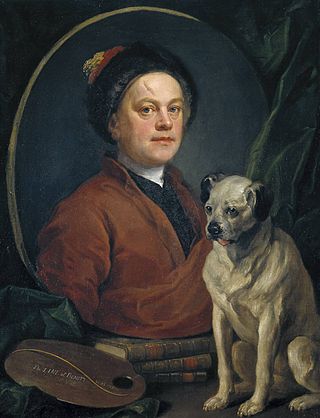
William Hogarth was an English painter, engraver, pictorial satirist, social critic, editorial cartoonist and occasional writer on art. His work ranges from realistic portraiture to comic strip-like series of pictures called "modern moral subjects", and he is perhaps best known for his series A Harlot's Progress, A Rake's Progress and Marriage A-la-Mode. Knowledge of his work is so pervasive that satirical political illustrations in this style are often referred to as "Hogarthian".
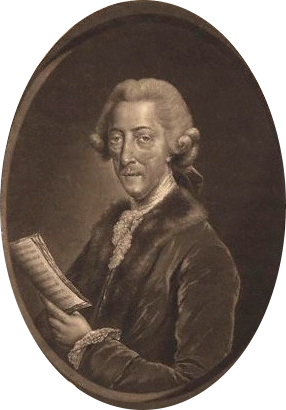
Thomas Augustine Arne was an English composer. He is best known for his patriotic song "Rule, Britannia!" and the song "A-Hunting We Will Go", the latter composed for a 1777 production of The Beggar's Opera, which has since become popular as a folk song and a nursery rhyme. Arne was a leading British theatre composer of the 18th century, working at the West End's Drury Lane and Covent Garden. He wrote many operatic entertainments for the London theatres and pleasure gardens, as well as concertos, sinfonias, and sonatas.

David Garrick was an English actor, playwright, theatre manager and producer who influenced nearly all aspects of European theatrical practice throughout the 18th century, and was a pupil and friend of Samuel Johnson. He appeared in several amateur theatricals, and with his appearance in the title role of Shakespeare's Richard III, audiences and managers began to take notice.

Charles Dibdin was an English composer, musician, dramatist, novelist, singer and actor. With over 600 songs to his name, for many of which he wrote both the lyrics and the music and performed them himself, he was in his time the most prolific English singer-songwriter. He is best known as the composer of "Tom Bowling", one of his many sea songs, which often features at the Last Night of the Proms. He also wrote about 30 dramatic pieces, including the operas The Waterman (1774) and The Quaker (1775), and several novels, memoirs and histories. His works were admired by Haydn and Beethoven.
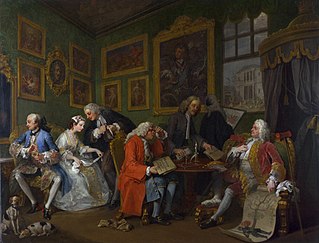
The Clandestine Marriage is a comedy by George Colman the Elder and David Garrick, first performed in 1766 at Drury Lane. It is both a comedy of manners and a comedy of errors. The idea came from a series of pictures by William Hogarth entitled Marriage à-la-mode.

Pietro Longhi was a Venetian painter of contemporary genre scenes of life.
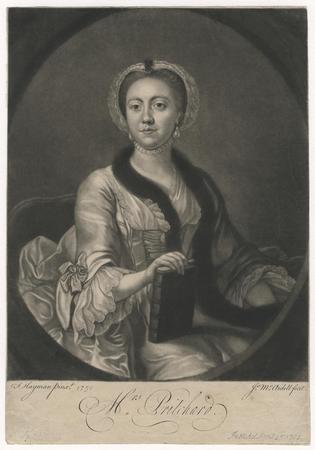
Hannah Pritchard was an English actress who regularly played opposite David Garrick. She performed many significant Shakespearean roles and created on stage many important female roles by contemporary playwrights.
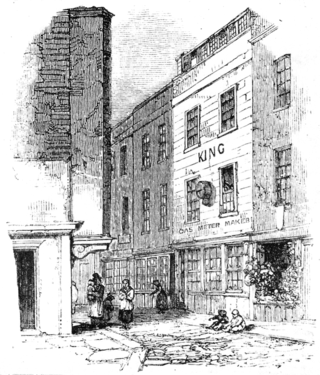
The Cock Lane ghost was a purported haunting that attracted mass public attention in 1762. The location was a lodging in Cock Lane, a short road adjacent to London's Smithfield market and a few minutes' walk from St Paul's Cathedral. The event centred on three people: William Kent, a usurer from Norfolk; Richard Parsons, a parish clerk; and Parsons' daughter Elizabeth.

The Yale Center for British Art at Yale University in central New Haven, Connecticut, houses the largest and most comprehensive collection of British art outside the United Kingdom. The collection of paintings, sculpture, drawings, prints, rare books, and manuscripts reflects the development of British art and culture from the Elizabethan period onward.
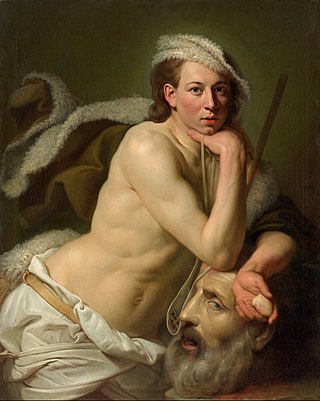
Johan / Johann Joseph Zoffany was a German neoclassical painter who was active mainly in England, Italy, and India. His works appear in many prominent British collections, including the National Gallery, the Tate Gallery and the Royal Collection, as well as institutions in continental Europe, India, the United States and Australia. His name is sometimes spelled Zoffani or Zauffelij.

The Tragical History Of King Richard Iii, Alter'd From Shakespeare (1699) is a history play written by Colley Cibber. It is based on William Shakespeare's Richard III, but reworked for Williamite audiences.

Joseph Johann Kauffmann ; other first name spellings in references: Josef Johann, Johann Joseph) was an Austrian painter known for his portraits, church decorations and castle depictions. Along with his wife Cleophea Lutz he had a single child, his daughter Angelika Kauffmann (*1741), is also remembered as a painter.
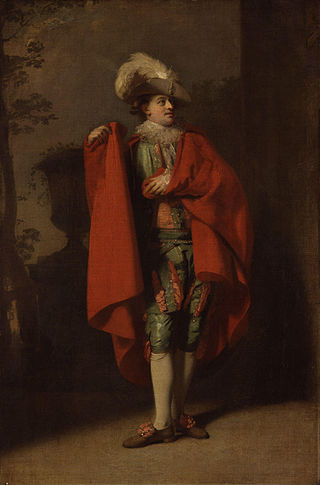
John Palmer was an actor on the English stage in the eighteenth century. There was also another John Palmer (1728–1768) who was known as Gentleman Palmer. Richard Brinsley Sheridan nicknamed him Plausible Jack.

David Garrick as Richard III is a painting dating from 1745 by the English artist William Hogarth.

John Henderson (1747–1785) was an English actor who played many Shakespearean and other roles. He first acted in Bath, where he was known as "The Bath Roscius", and then in London. Had he not died young he would have been remembered as a worthy successor to David Garrick.

Robert Sayer (1725–1794) was a leading publisher and seller of prints, maps and maritime charts in Georgian Britain. He was based near the Golden Buck on 53 Fleet Street in London.
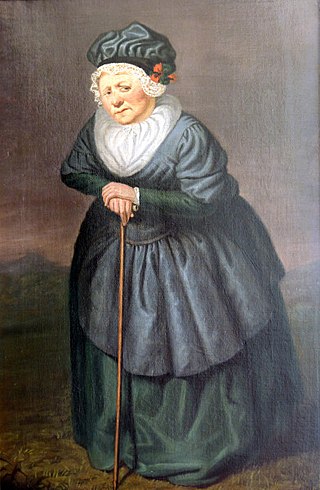
Mary Bradshaw was a British stage actress at Theatre Royal, Drury Lane for 37 years. She appeared with David Garrick and she was included in a painting by Johann Zoffany.

David Garrick Between Tragedy and Comedy is a 1761 painting by the English painter Joshua Reynolds, depicting the actor and playwright David Garrick caught between the Muses of Tragedy and Comedy. It is regarded as one of Reynolds's most studied and well-known paintings, and is now in the collection of Waddesdon Manor, Buckinghamshire.

In 1757, the actor David Garrick commissioned the sculptor Louis-François Roubiliac to make a full-size marble statue of William Shakespeare for Garrick's octagonal Temple to Shakespeare, erected near his villa beside the River Thames at Hampton, to the west of London. The sculpture cost 300 guineas and was installed at Garrick's temple in 1758; it remained there until it was bequeathed to the British Museum along with Garrick's books in 1779. The sculpture was transferred to the new British Library in 2005, where it is displayed on a new travertine plinth beside the main staircase in the main entrance hall.




















